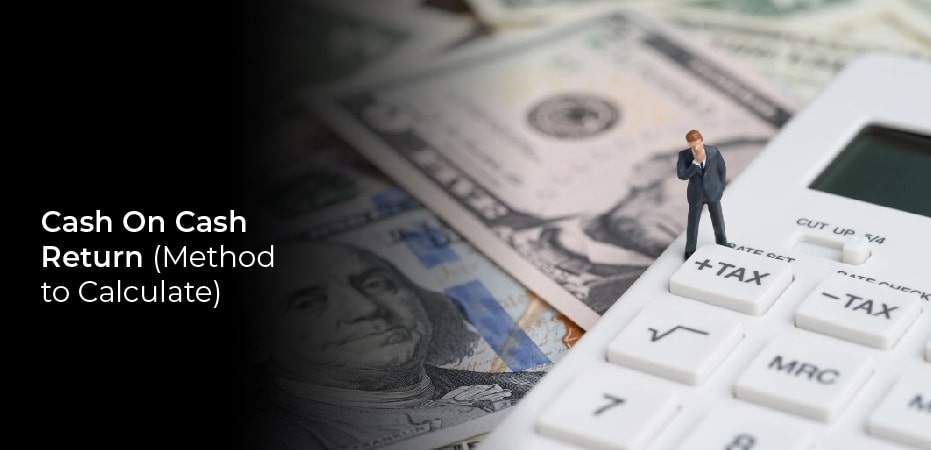Cash on cash return is the ratio of cash flow, before tax, to cash invested. This ratio is expressed as a percentage. It is a very important measure of investment performance. If you invest in the right assets, cash on CashReturn can be extremely high—however, a few things to remember before investing, like variation and relevance in real estate.
What is Cash on Cash Return?
Cash on cash return is a valuable tool for investors when evaluating the profitability of a property. It is used to make investment decisions and helps investors determine the amount to put down for a down payment. However, it should not be the sole metric investors use when evaluating a potential investment. The best investors employ a variety of metrics to determine their overall investment performance.
The cash-on-CashReturn rate can provide useful insight into a business’s potential for regular cash distributions. It’s useful when used in conjunction with other metrics, including the IRR, equity multiple, and distribution variations. These metrics are used to gauge the relative profitability of a business plan.
Method to Calculate Cash on Cash Return of Assets?
Key Points
- Cash on cash return does not account for property appreciation.
- It does not take into account the equity that a property gains.
- Does not consider the risk which associates with real estate investment.
Cash on CashReturn is calculated by dividing the net cash flow in year one by the cash invested. This can be a complex calculation, but it is useful for comparing different real estate investments. Cash on cash return is an important metric for evaluating rental properties. If you invest in properties with a higher cash flow, you should look for higher cash on CashReturn.
The annual cash flow from the investment must be calculated first before calculating the cash-on-CashReturn. A cash flow statement for the first year looks like this:
- Annual net cash flow = total gross revenue – total expenses
- Annual net cash flow = $1.2 million – $750,000
- Annual net cash flow = $450,000
Our next step is calculating the cash-on-CashReturn by dividing the annual net cash flow by the equity invested.
- $450,000 / $2,700,000 = 16.7%
There is a 16.7% cash-on-CashReturn on the property. Consequently, the property’s annual profit for that year will be 16.7% of its initial investment.
Cash on CashReturn is often expressed as a percentage and represents the amount of money available for deposit after expenses are paid, excluding income tax. As a result, the cash-on-cash return measures the percentage of return on the total investment. This formula allows you to compare investments, years, and investors.
Variation
The Cash-on-Cash return formula measures the cash flow generated from a real estate investment divided by the amount of equity invested. It is often used in commercial real estate transactions. In this case, the total cash invested includes the initial equity investment, which is usually the entire purchase price of the property plus any loan proceeds and closing costs. Additional equity may be required over the holding period.
The coefficient of variation is an effective tool for tracking changes in data over time. It can be used in economics and financial research and is relatively easy to calculate. In other words, this real estate investment depends on various factors. For instance, some investors may prefer lower cash on cash returns, while others may prefer a higher cash return. Some may be willing to accept a cash-on-cash back-off of 8% to 10%. Others may be looking for a cash-on-CashReturn of 20%.
The cash-on-cash return metric is an important component of commercial real estate investment analysis. It measures how much income a property generates in a given period and it is also known as the equity dividend rate and can help investors determine the potential of an investment. It is a common commercial real estate appraisal metric and is often used by appraisers to calculate the cap rate for an investment property.
Relevance in Real Estate
Cash on cash return is an important financial indicator for evaluating the potential profitability of an investment property. It is also used in comparing various deals and can help determine which financing method will work best in a given situation. It can also help you compare various investment properties side by side.
We can compare Cash-on-cash returns using three or more deals to see which offers the highest cash-on-CashReturn. It is important to note that it should not be the only metric you use. Most successful investors use several metrics to evaluate a potential investment. For example, if you are interested in investing $2 million in three deals, you can use cash on cash return to determine which deal offers you the highest returns.
In real estate, the cash-on-CashReturn metric is often accompanied by other indicators, including market value and equity. Equity in property reflects the property’s value less any payments you may owe the lender. The market value of a property may fluctuate, and your return may be higher or lower than you expect. Therefore, it is important to understand the formula before investing your money.
Verdict
Cash on cash return provides a simple formula that can give you an idea of the passive income potential of a real estate investment. This measure is different from return on investment, which calculates the total return on the property over a given period. It is an important measure for prospective investors and can help you make informed decisions. However, it is important to note that Money on cash return does not take into account the appreciation in the property’s value. Let us know in the comment box if you have ever done a money-on-money return in real estate.



